Unexpected Findings
The Diversity and Inclusion Committee sought to illuminate other angles of workplace experience in conjunction with the committee’s earlier discussions during the survey development process. These discussions included questions about caregivers, various academic degrees, and student loan debt. The committee also used this opportunity to dive deeper into the report’s category of “underrepresented architects of color” to see if architects of varying ethnicity or race might be having different experiences in the profession. These comprise unexpected findings of the survey.
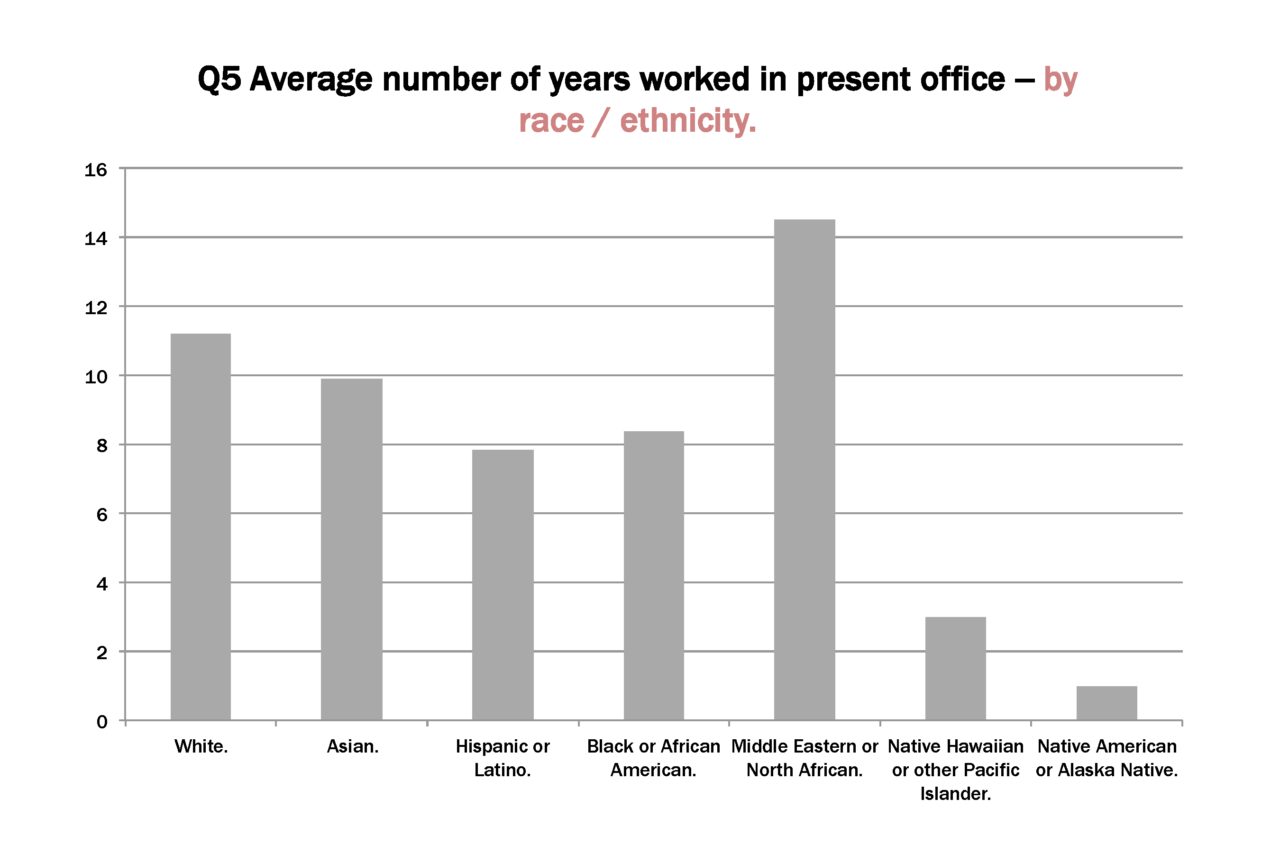
White respondents averaged 11 years tenure in their present office, while Latino, Black, and Asian respondents averaged 8-10 years.
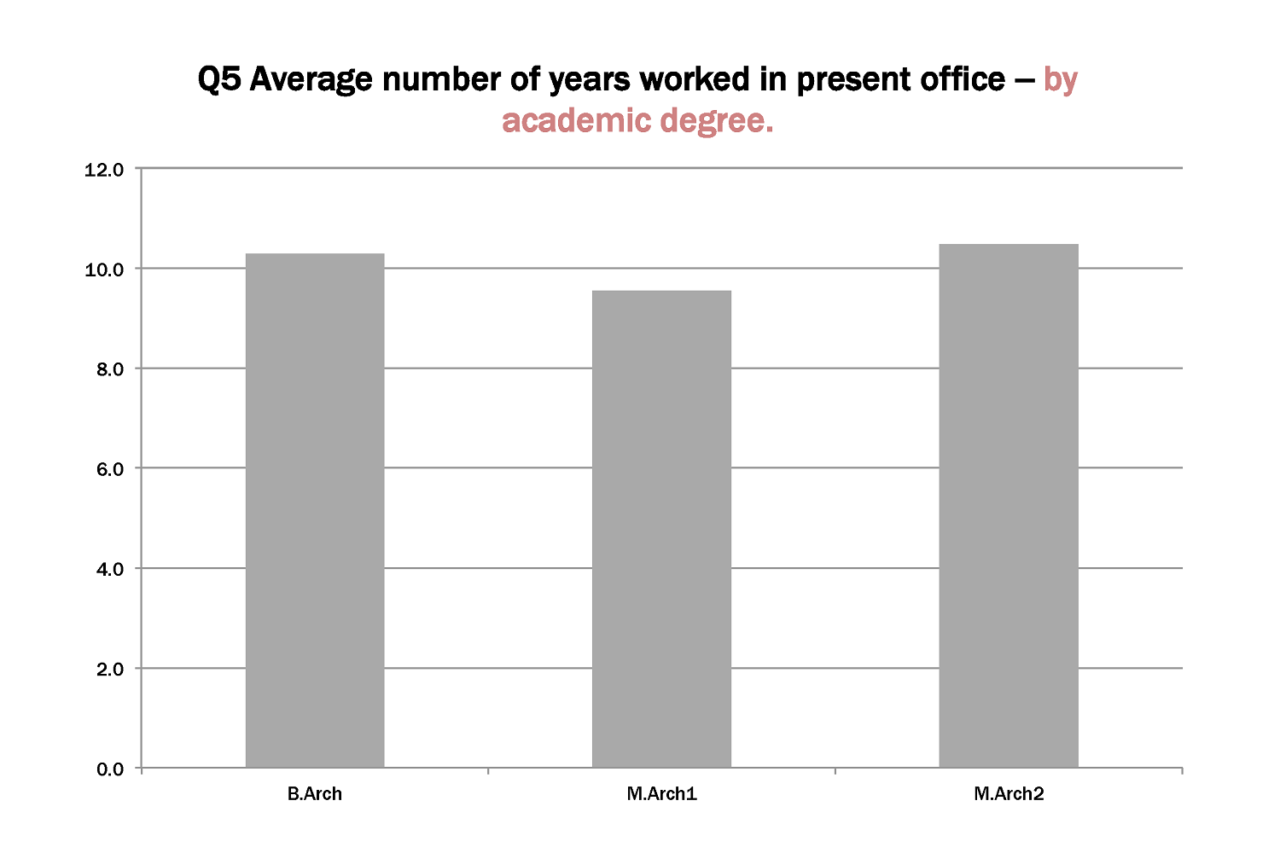
Respondents with one of the three professional academic degrees in architecture averaged similar tenure in their present firms, with
M.Arch1 averaging 8-11 months fewer than B.Arch or M.Arch2.

Asian and Hispanic/Latino respondents reported greater authority in decision-making on their projects when compared with White or Black respondents.

Respondents who had paid off their student loans reported greater authority in decision-making than those who still owed money.
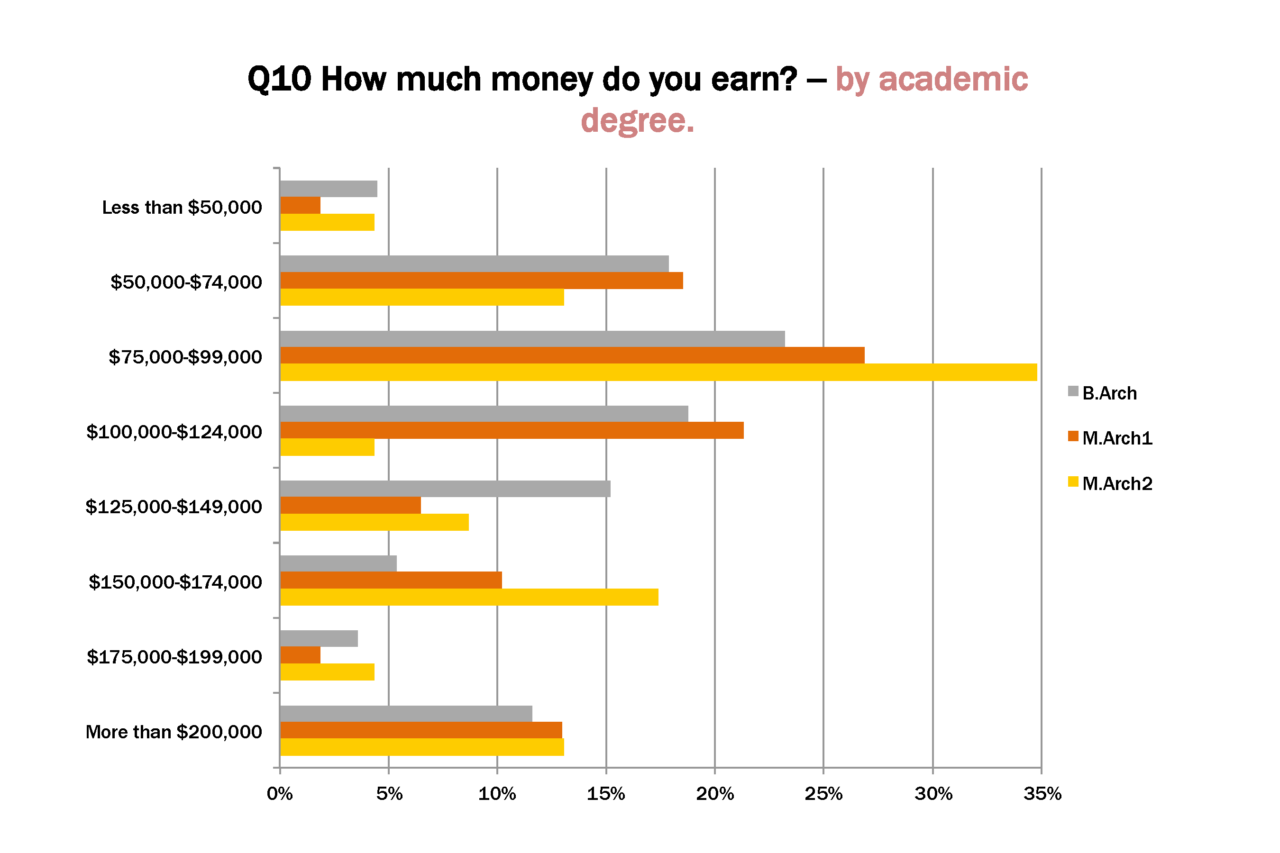
Respondents who earned one of the three professional degrees in architecture reported similar earnings, with around 25% earning in the range of $75,000-$99,000. Looking at higher earnings brackets, 15% of B.Archs earned in the $125,000-$149,000 range. But in the range of $150,000-$174,000, M.Archs overtook B.Archs. Earnings brackets above $175,000 showed few differences between the three degrees.
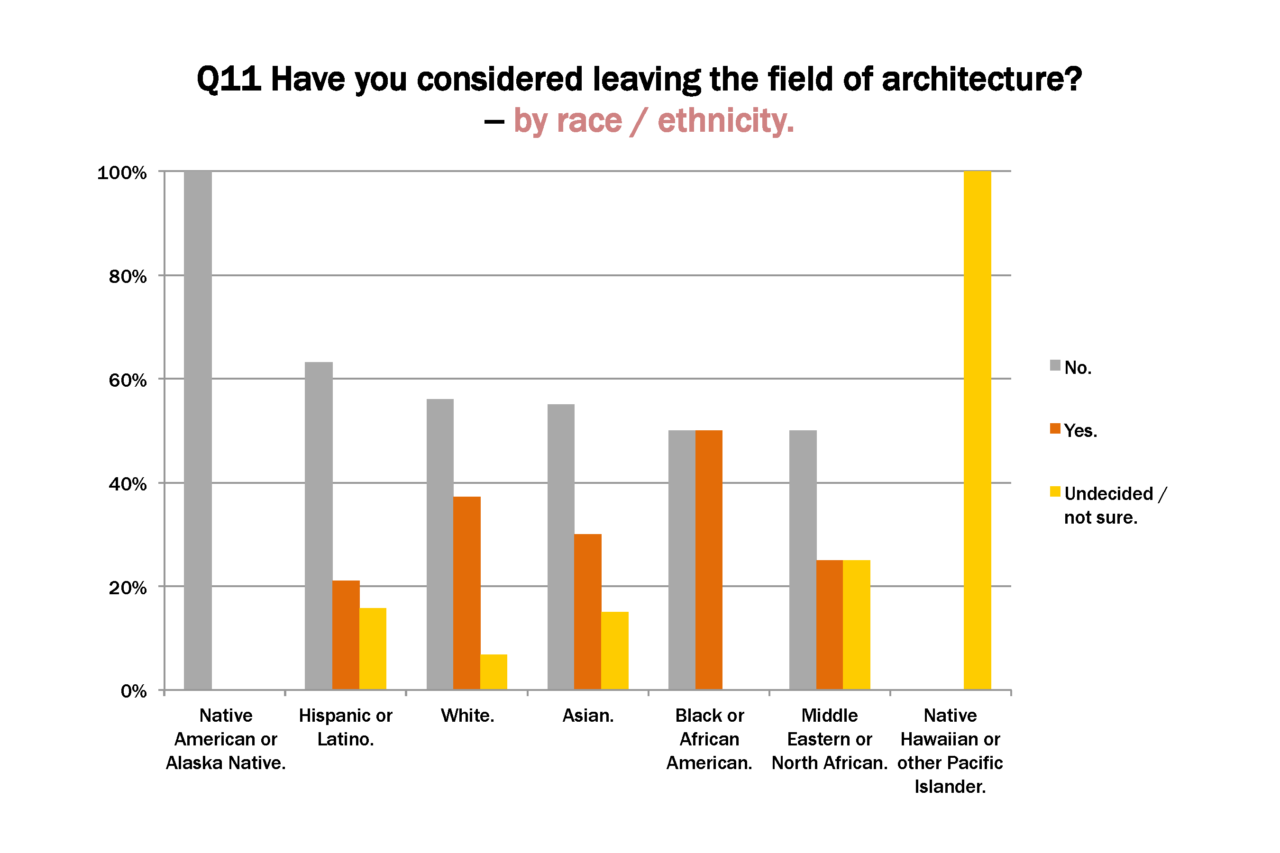
Hispanic/Latino respondents reported the strongest commitment to stay in the profession, with fewest thoughts of leaving or uncertainty.

About 60% of caregivers reported that they had no thoughts of leaving the profession. Almost two-thirds of caregivers who sharethe responsibility with another person reported that they were also committed. Non-caregivers reported less commitment, and more thoughts of leaving and uncertainty.
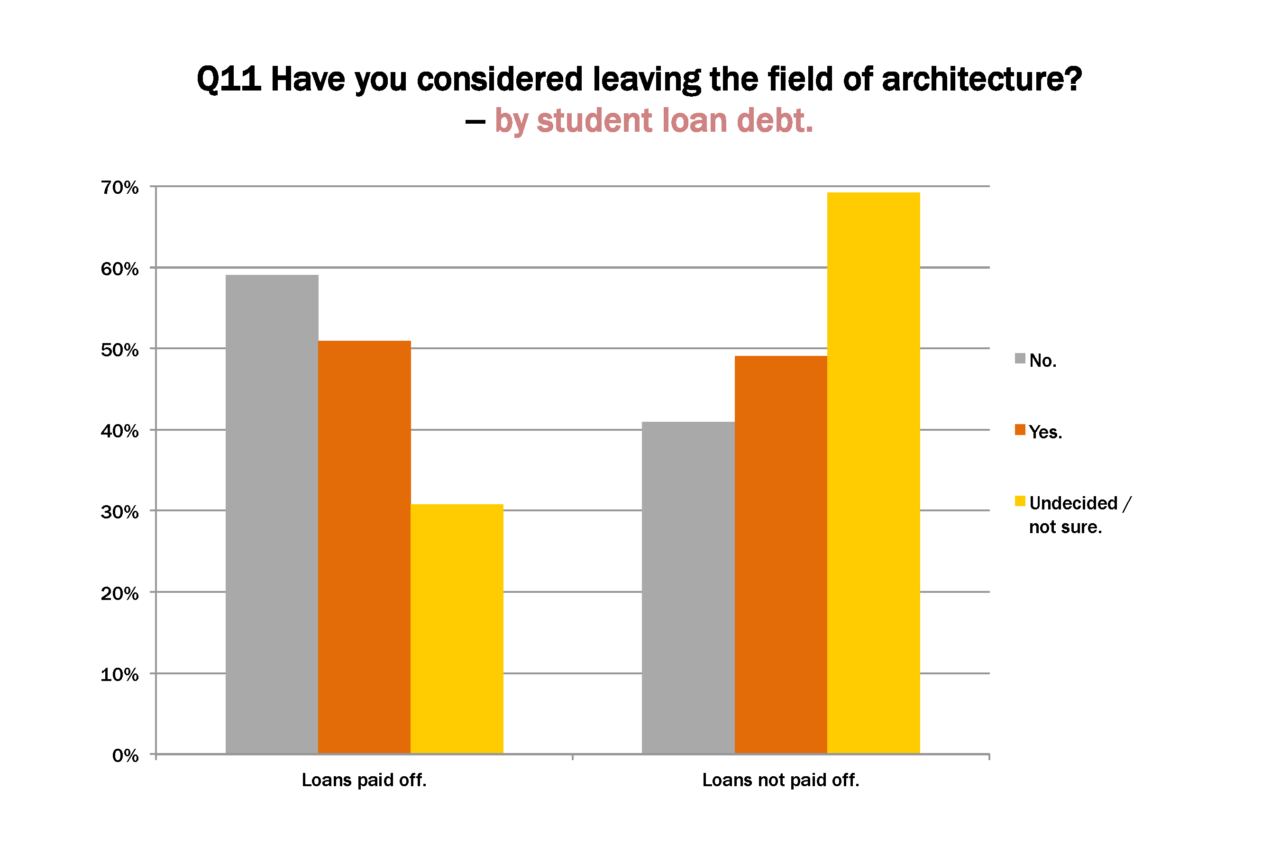
Of respondents who had taken student loans to finance their education, those who still owed money were more likely to report
uncertainty and thoughts of leaving the profession.

57% of B.Archs and M.Arch2s reported that they had no thoughts of leaving the profession. M.Arch2s were less likely than B.Archs to report thoughts of leaving. In comparison with both of their counterparts, M.Arch's were less committed and had more thoughts of leaving.
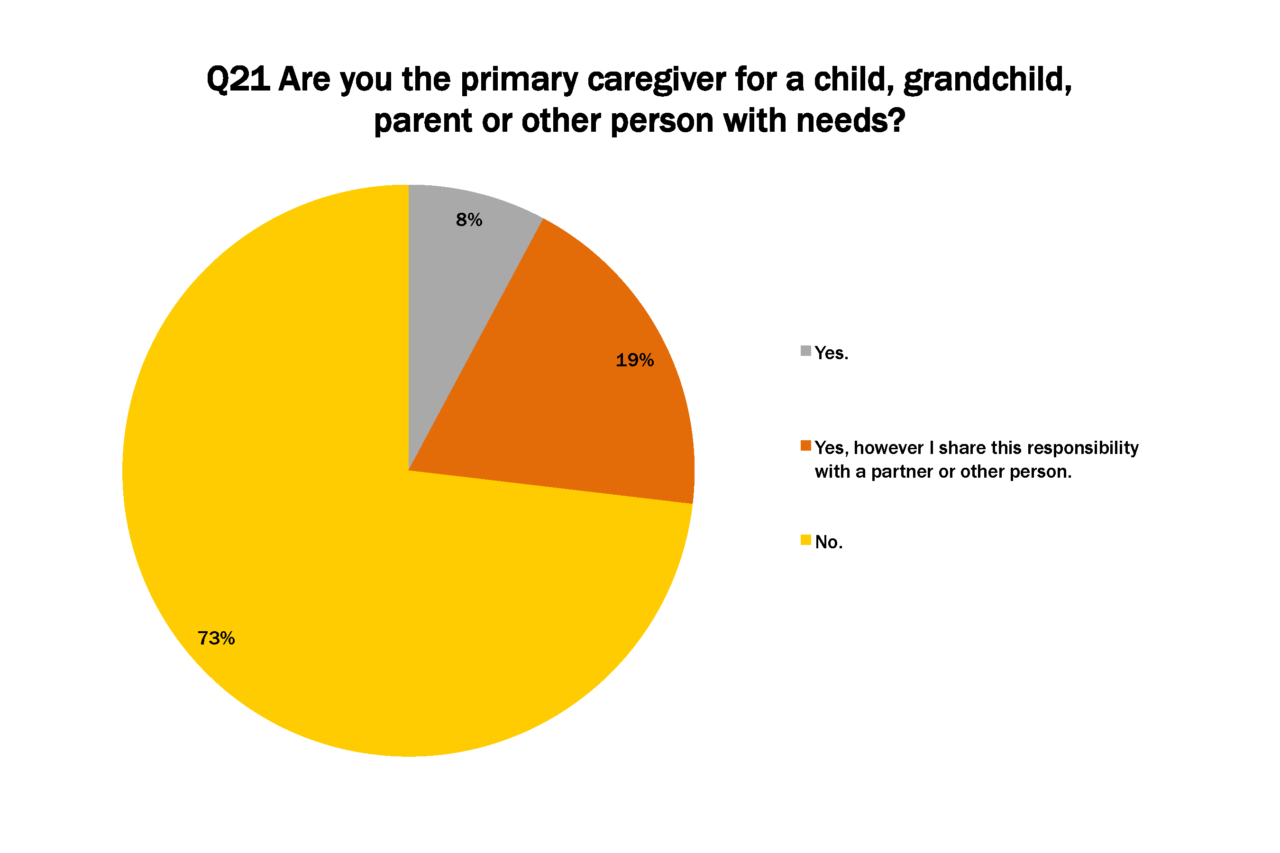
Less than 10% of respondents identified as sole caregivers, while twice as many identified as sharing the responsibility of caregiving with a partner or other person. Almost three quarters of respondents said that they were not caregivers.
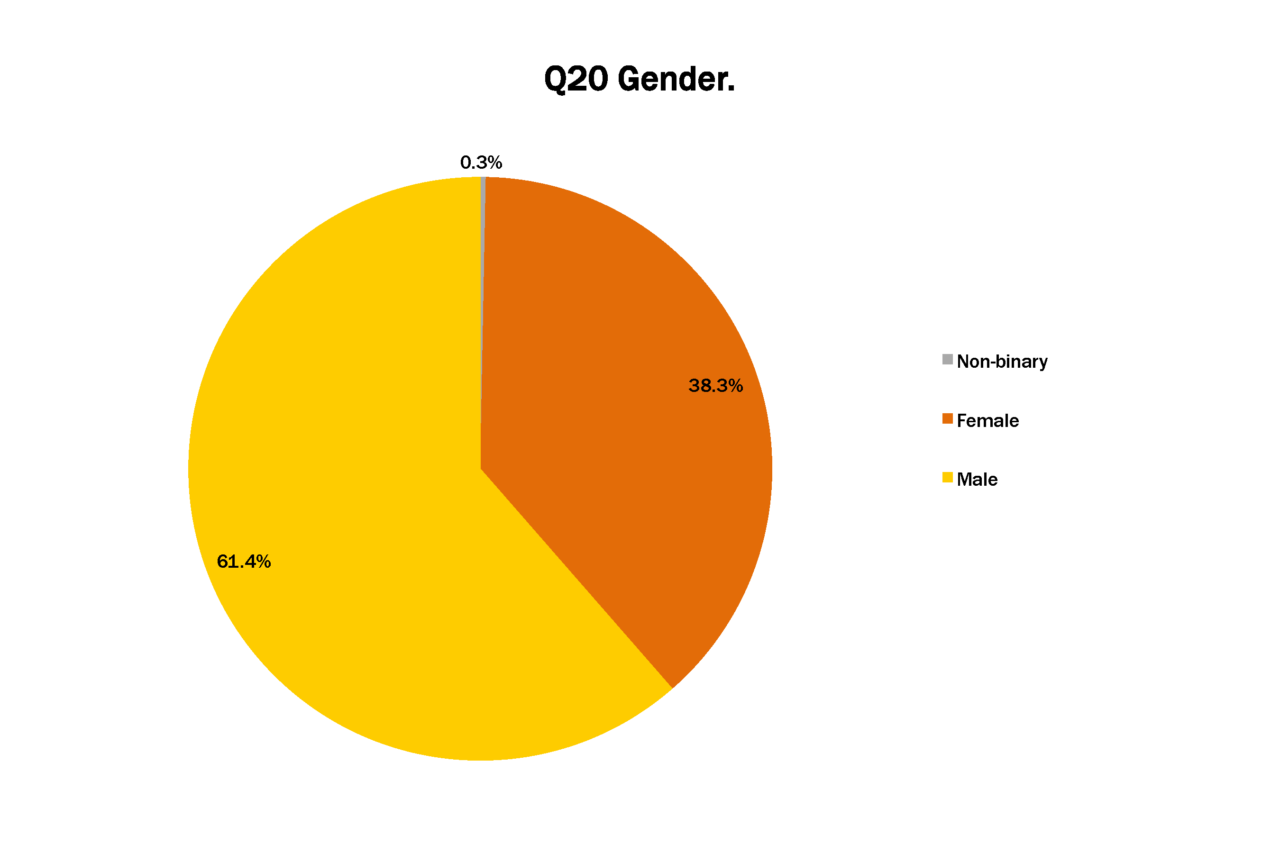
38% of respondents were female, and 62% were male. This question was not asked of respondents, but data was gathered via correlation with respondents’ AIA membership numbers. A future survey might change the way demographics data is gathered, and the order in which demographics series questions appear relative to other topics.
Related Events
Fri, Oct 12 | 1.5 LU
J. Max Bond Jr. Lecture | Attaining Wakandan Utopia
Tue, Sep 11 | 1.5 LU
| 1.5 HSW
Diversity X Design Breakfast Series: Infrastructure with Building Leaders
Fri, Jun 22
A+ Session: Lessons Learned from Whitney Young
Mon, Jun 18 | 1.5 LU
| 1.5 HSW
Equity X Design Mappy Hour: Sketching Equitable Workplaces
Sat, Feb 10 | 3.5 LU
Next Gen Arch: Designing Towards an Equitable, Diverse, and Inclusive Profession
Wed, Feb 1 | 1.5 LU
| 1.5 HSW
Revisiting Whitney Young: Diversity Today







